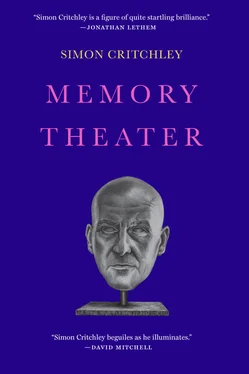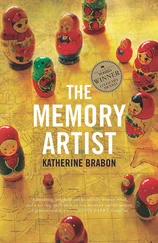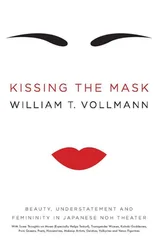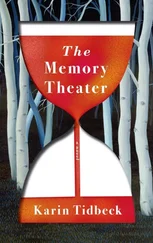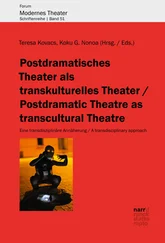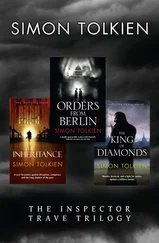I went to seea psychiatrist with psychoanalytic sympathies on the Upper East Side. Expensive. Platitudinous. Useless. He suggested hospitalization and prescribed antipsychotic drugs. At least I got an extended sick leave from my professorship and stayed at home every day. The only people I talked to were my landlady and her cat, Frances (“For by stroking him I have found out electricity / For I perceived God’s light about him both wax and fire / For the Electrical fire is the spiritual substance …”).
One insomniac night, during the usual hell of physical pain that I had got used to, I could feel something happening in my head. It felt like the loosening of a blockage, or a shifting of psychological tectonic plates. Sudden elation. The fear disappeared. An overwhelming mania washed over me. The physical pain that accompanied the hallucinations and which invaded my body was brusquely transformed. My contracted melancholic ego swelled up like a Montgolfier balloon to fill the universe. I had stopped taking the medicine days before because it just made me more miserable and robbed me of what had become my one comfort: my visions. Now they were an aurora borealis. My body was a buzzing antenna into which radio waves flooded from the entire cosmos. I was the living switchboard of the universe. My skull was a magnetized globe.
Some months earlier, I had received an e-mail from a Dutch university: Tilburg, in North Brabant. They were looking for a chair of ethics and asked me if I’d like to be considered. What did I know about ethics? Was I good? After finding the place on a map, I made a discovery. I told them that I could not teach full-time but would be interested in some sort of really limited, part-time arrangement. They agreed and a contract had already been drafted. The salary was a pittance, but now that didn’t matter.
I knew exactly what I had to do next.
I resigned immediately from my position in New York and refused all efforts to return phone calls and e-mails from the dean’s office and saw none of my colleagues. By July of that year, I left Brooklyn for good, placed my books and few belongings in storage in East New York, near JFK, and left for the Netherlands. I took the train from Schiphol Airport and ninety minutes later checked into Hotel Central, in ’s-Hertogenbosch, which was the full name of Den Bosch, home of the appropriately eponymous Hieronymus. It was just a ten-minute train ride from the university.
With the money I had made on the dead philosophers book, I bought a small house outside Den Bosch with a plot of land behind it, surrounded by trees. I needed some space. The house was close to an extraordinary series of sand dunes, De Loonse en Drunense Duinen, not far from the village of Vught, which was the location of a concentration camp during the Second World War — Kamp Vught — which was also the patch of heath where the entire Jewish community of Den Bosch had been burnt alive in the thirteenth century. The Germans can always be relied upon for a sense of history.
I started work on the memory theater almost immediately. It took months to organize, as I had no practical skills and spoke no Dutch. I hired a local architect called Bert van Roermund and two carpenters. Designs were drafted from Michel’s maquette. I even got students from the local art school to help me make a large number of papier-mâché figures, of various sizes, from six inches to two feet high, white and anonymous, looking rather like vulgar gnome-like garden ornaments. They cost a fortune and the students were incompetent, requiring constant supervision. But within three months, despite the persistent drizzle of the Brabant autumn, the exterior work of the theater was finished. I would complete the interior alone.
The theater was enclosed with a roof like the maquette. It stood about eight feet high and sixteen feet across. I had to stoop a little to enter through a small door into a kind of parodos , or entrance, to the left and there was the stage, elevated six inches above the ground with a simple dark wooden kitchen chair. Around me, the mini-auditorium was arranged with its seven gangways and seven tiers. The blank, expressionless eyes of forty-nine papier-mâché statues stared back at me.
Then the work of memory really began. It was too cold, cramped, and poorly lit to work in the theater, so I took some of the statues into the house and began my taxonomy. In the front, with the smallest statues, I had arranged all the elements of my life that I could remember together with family attachments and friends, such as they were. The statues were brightly painted with sets of initials, number sequences, and small diagrams that would call to mind whatever I recalled about my childhood, which wasn’t much, frankly. Having my head ducked in water at nursery school. A broken arm after being thrown off a scooter. Something about brother-sister incest. By cock, she was to blame. That cunt Kevin who bullied me at school. My ancient-history teacher was called Mr. Parker. Assyria and Babylon. The glory that was Greece. H. D. F. Kitto. I lost interest when we started studying medieval systems of plowing. The accident had wiped so much clean and the rest seemed like it belonged to someone else.
On row two, I had reduced my books and papers first to a series of short summaries and from that to a series of notations and symbols, which I memorized. By learning to associate text with image through a process of lengthy training, I could flawlessly reproduce extended stretches of argument and exposition. It was amazing. I also symbolized my various plans for works that I knew I would never finish, such as my series of essays on the superiority of Euripides over the other Greek tragedians, a book called Sartre’s France , a pamphlet on the etymologies of the names of fish in diverse languages, a set of embarrassing sub-Pessoaesque prose fragments, and a book on Hamlet that would now never get finished. The rest is silence.
Rows three to five were devoted to the history of philosophy. I arranged matters chronologically in a series of obvious clusters: (i) the Pre-Socratics, (ii) Platonists and Aristotelians, (iii) Skeptics, Stoics, and Epicureans, (iv) Classical Chinese Philosophers, and so on. I found this remarkably easy to symbolize: a solid circle for Parmenides, a torch for Heracleitus, twin scales of justice, one inverted and the other right side up, for Carneades, a line joining God and the world for Aquinas and a line separating them for Siger of Brabant, a butterfly for Zhuangzi, a snake for Plotinus, and so on through the centuries. When I could, as with Copernicus (a series of circles) and Kepler (an ellipse), I made a visual note of parallel developments in physics and later in chemistry and biology. It was oddly pleasing.
And so it went on. Row five finished with visualizations of (i) Louis Althusser’s theory of ideology (arrows pointed towards a head branded with a huge “S”) and his late account of the aleatory materialism of the encounter (rainfall and simple solids), (ii) Deleuze’s plane of immanence as a transcendental field (a simple geometrical plane — I adapted a map of the Netherlands), and (iii) Derrida’s grammatological theory of signification (a series of Chinese ideograms borrowed from Ezra Pound’s Cantos ). Row six was devoted to various personal miscellany: a series of symbolic maps registering land borders at the outbreak and end of the First and Second World Wars; the playing and coaching staff of the great Liverpool Football Club teams of the 1960s, ’70s, and ’80s reduced to a series of initials (RH, RY, IS-J, IC, KD — YNWA); snatches of lyrics of my fifty favorite albums: from Here Come the Warm Jets , through Strangeways, Here We Come , to Fear of a Black Planet .
Читать дальше
